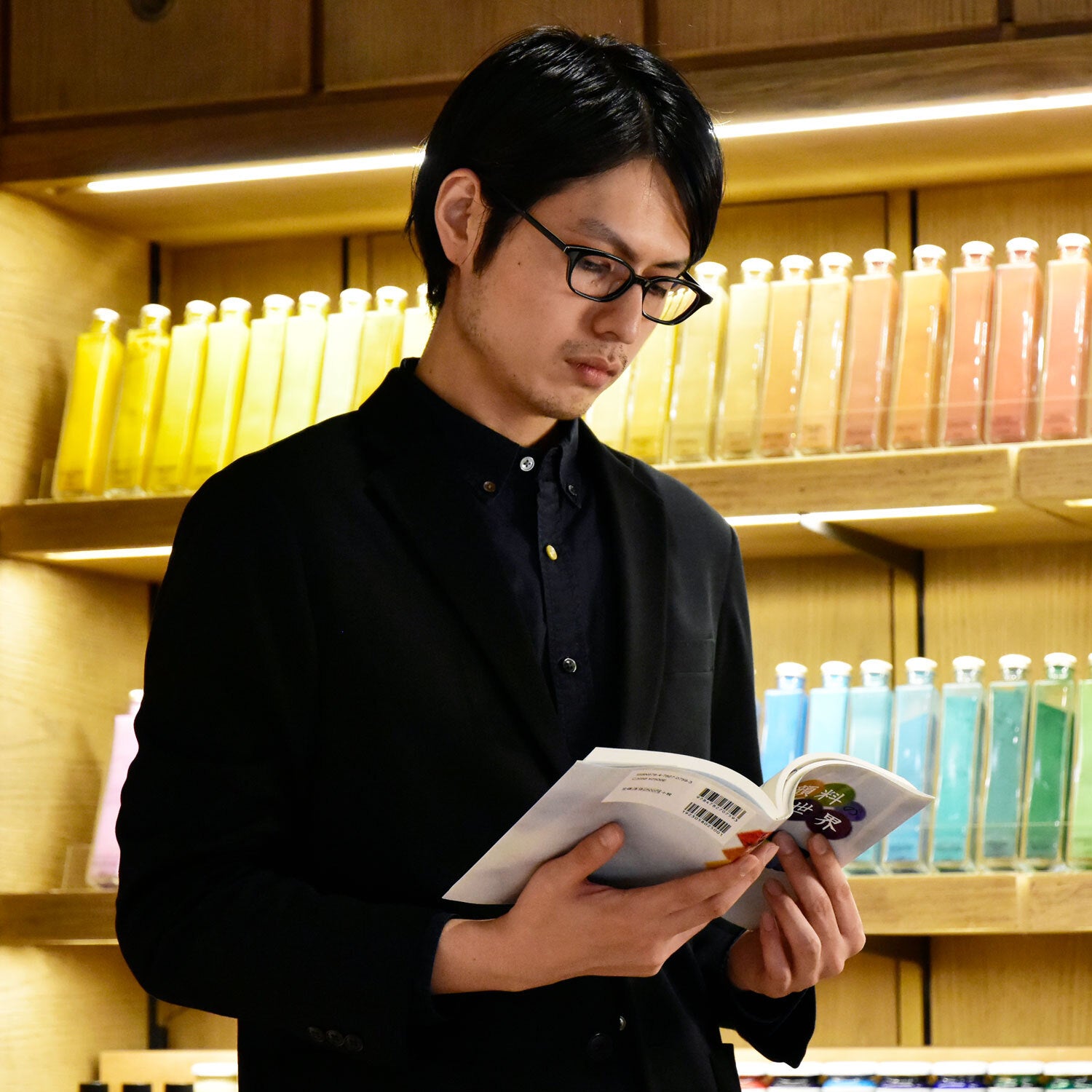Silk is one of the most essential painting substrates in Asian art.
Although the smooth surface created by silk threads is very fascinating, it is not as stiff as linen or linen paper, so it usually takes several processes before it can be fully appreciated as a work of art.
The silk needs to be stretched into a wooden frame, and then it is backed (reinforced with a piece of thin paper) and mounted (so that it can be hung in an alcove or on a wall) by a mounting artisan.
Along with these processes, this is how a piece of silk painting turns into the hanging scroll that we see in art museums.

《Kyokujitsu-zu: 旭日図, The Drawing of the Rising Sun》Keisho Imao Painting on silk Private collection
For this reason, silk is often treated as a "low-yielding support material," but at the same time, silk has a smooth luster and texture that can only be expressed by fine fabrics.
By looking at the process I’ve mentioned above, I’m sure most of you may think that "It's too hard for me to paint on a piece of silk!”. However, after reading this article, perhaps it may change your mind and think, "Oh, it’s easier than I thought and I want to try it myself!”
First, you need to know that the charm of silk lies in the beauty of its painted texture.
The delicate touch and blotchiness created by the spun yarn give a finely textured painting surface that cannot be found in Kozo paper or Gampi paper.
And with the use of effect pigments, you can create a gorgeous, sparkly mysterious atmosphere for the painting.
You don’t have to limit yourself to only using traditional art materials, but it is also possible for you to use these modern ones to paint on silk.

The color I used in the picture below is called Gunjo (群青).
You can create this kind of softly blurred, beautiful gradation by using Suihi (tinted pigments).

Moreover, by drawing from the backside of the silk, as in a glass painting, the materiality of silk can be utilized to create a layered expression.

This is a view from the painted front surface of the silk, and this is what it looks like from the back:

It looks like it has been glazed with a touch of white, and this kind of texture is one of the unique characteristics of painting from the back of the silk.
PIGMENT TOKYO provides three thicknesses of Eginu silk canvas: 2 Chohi Deluxe (thin), 2 Chohi Heavy (medium), and 3 Chohi (thick).
Feel free to try on each thickness of silk until you find the one that suits you best!
Almost any kind of pigments can be used on silk. For example, Nihonga (Japanese painting) materials such as mineral pigments, Sumi ink, and Suihi (tinted pigments), as well as effect pigments. If you tend to use mineral pigments, please remember to choose those fine-grained pigments (No. 10 or higher) for better fixation.
Moreover, since there will be a backing process for the silk painting, it is better to use animal glue as the binder.
The reason for using animal glue as the binder is that the entire work is sometimes moistened during the backing or mounting process, which requires the paint itself to have high elasticity and durability.
Silk painting also needs to be flexible enough to be made into a hanging scroll so that the paint will not crack easily once it is rolled up.

《Kyokujitsu-zu》,taken out of its Tomobako (共箱, the box which usually works are stored).
Therefore, because of the needs of the processes I mentioned above, waterproof paints such as acrylics and alkyd resins are not suitable for surface mounting and long-term storage, even though these paints don’t have any problems of fixing on the silk.
Here’s the link to PIGMENT TOKYO's YouTube channel, the video will show you how to stretch and mount the silk on a wooden frame.
It may look difficult at first glance, but don't you worry, our art materials expert will explain the whole process to you steps by steps.
Painting tools such as paste brushes are also available at PIGMENT TOKYO online store.
For those who are interested, please check out the link below.
Moreover, if you are interested in having your work displayed or having problems on mounting your own silk painting, feel free to contact us through our contact form.
Contact
https://pigment.tokyo/en/pages/contact
Perhaps you have fewer opportunities to paint on silk these days, but may you be able to give out a whole new look at your artwork from a different perspective by trying new support!








